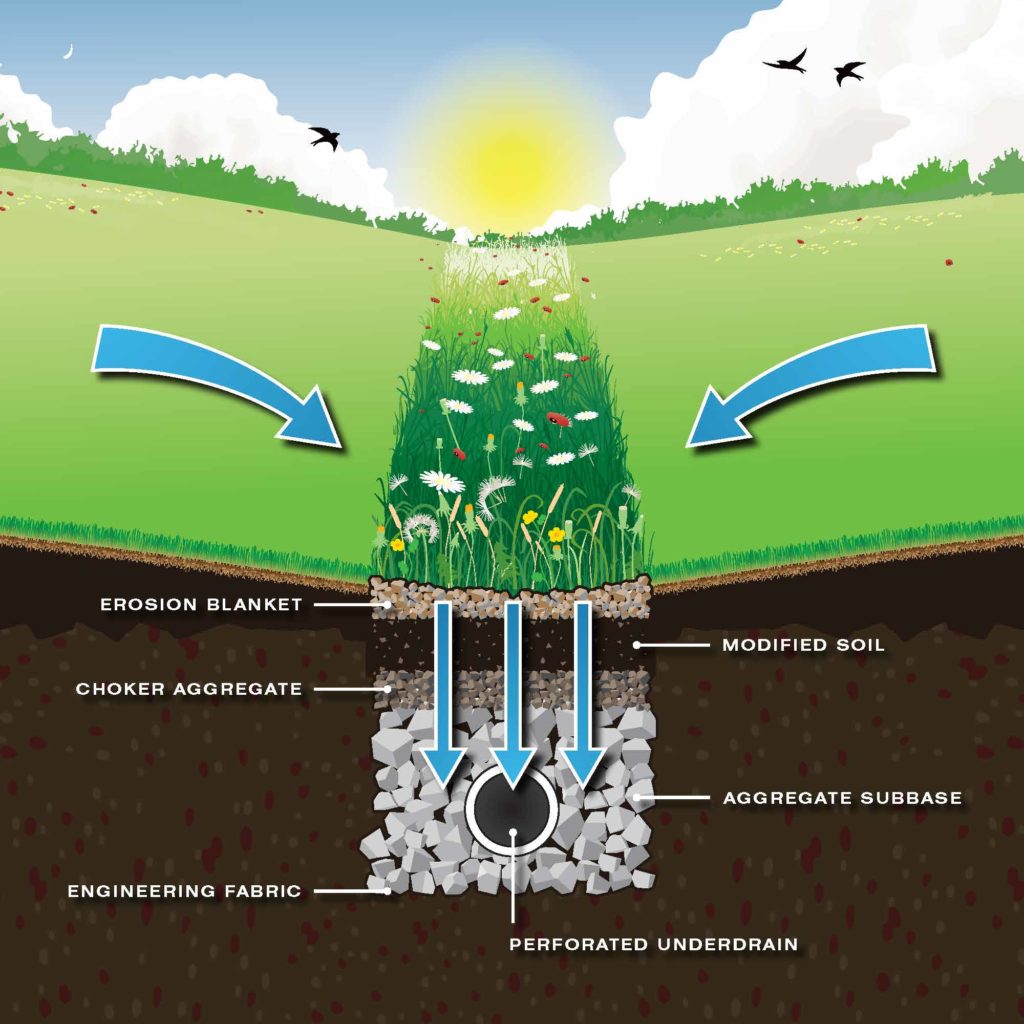Bioswales: How They Work
ResourcesA bioswale is a waterway or channel planted with deep-rooted native prairie plants and grasses and is often placed in areas where water flows during rainfall events. Bioswales provide water runoff with an avenue for filtering and treatment within the conveyance system. The ultimate goal of bioswales is to remove pollutants and nutrients from stormwater runoff before it enters our streams and rivers, eventually discharging to coastal areas farther downstream.
Beneath the uppermost layer of native plants are several layers of rock and soil through which the water filters through, eventually reaching the bottom of the swale. Once the water has filtered through all layers of the bioswales, it is either absorbed by the deeply rooted plants above or is slowly discharged through a tile line placed at the bottom of the swale. The combination of layers within a bioswale traps sediment from flowing downstream and facilitates nutrient removal through biological uptake and microbial activity.
Many bioswales are hard to recognize at the surface as they appear to be large swathes of prairie flowers and grasses. However, they play a vital and sustainable role in treating stormwater runoff.
Veenstra & Kimm, Inc. has extensive experience with stormwater management across the Midwest, with bioswale design and construction as just one of many solutions we have provided for numerous clients over the last 60 years.

